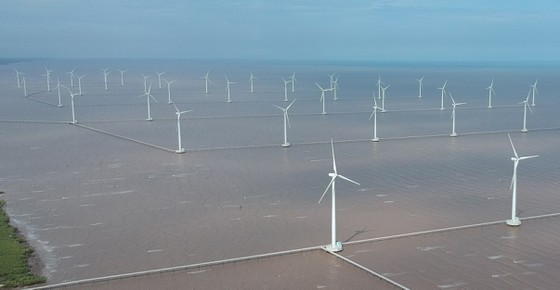
The Power Development Master Plan 8 aims to mobilize all domestic and international resources for electricity development, ensuring a sufficient supply of electricity with increasingly high quality and reasonable electricity prices.
Specifically, by 2030, the total installed power capacity of Vietnam will reach 137.2 gigawatts (GWs). Of which, coal-fired thermal power accounts for 26 percent; gas-fired thermal power 21 percent; hydroelectricity 18 percent; wind, solar, and other renewable energy 29 percent. In 2045, the total power capacity will nearly hit 276.7 GWs. Of which, coal-fired thermal power accounts for 18 percent; gas-fired power 24 percent; hydroelectricity 9 percent; wind, solar, and other renewable energy above 44 percent. Through the structure of the power source, it shows that the Power Development Master Plan 8 encourages the development of renewable energy, besides hydroelectricity, from about 13 percent in 2020 to nearly 30 percent in 2030, and 44 percent in 2045.
Contributing opinions to the Draft National Power Development Plan 8, experts said that many economic and technical factors are difficult to determine. For example, the Covid-19 pandemic continues to develop complicatedly, possibly negatively affecting the supply and demand of the energy system in general and the power system in particular. Besides, the boom in investment registration for renewable energy projects, especially solar and wind power, requires a more appropriate approach in planning, designing, investing, and operating the power system. In particular, it is necessary to have a lucid, transparent, objective, and scientific mechanism to encourage the development of renewable energy.
To be able to carry out well the Power Development Master Plan 8 in the current situation, the challenge is that the electricity demand is still growing at a high speed but the primary energy source is increasingly scarce. To ensure electricity supply until 2030, Vietnam is expected to import 1.2 million tons of LNG, 35.1 million tons of coal in 2025, and 8.5 million tons of LNG and 45 million tons of coal in 2030. The annual demand for investment capital for the development program of power grids and sources is up to US$13 billion per year for the 2021-2030 period. Meanwhile, the increasing environmental requirements of international organizations in consideration of the credits to support the development of power sources and grids impose many pressures and challenges for the implementation of the Power Development Master Plan 8. The key point that needs consideration is that most of the power sources that have been invested in construction are located far away from the load center, while the trend of power transmission changes. Instead of transmitting electricity from the North to the South as in the previous years, power transmission tends to gradually move in the opposite direction.
With the desire to build an effective and feasible Power Development Master Plan 8 when putting into implementation, it is necessary to have specific mechanisms and policies to be able to successfully deploy power projects, ensuring stable and safe power supply, serving socio-economic development in the coming period.
























